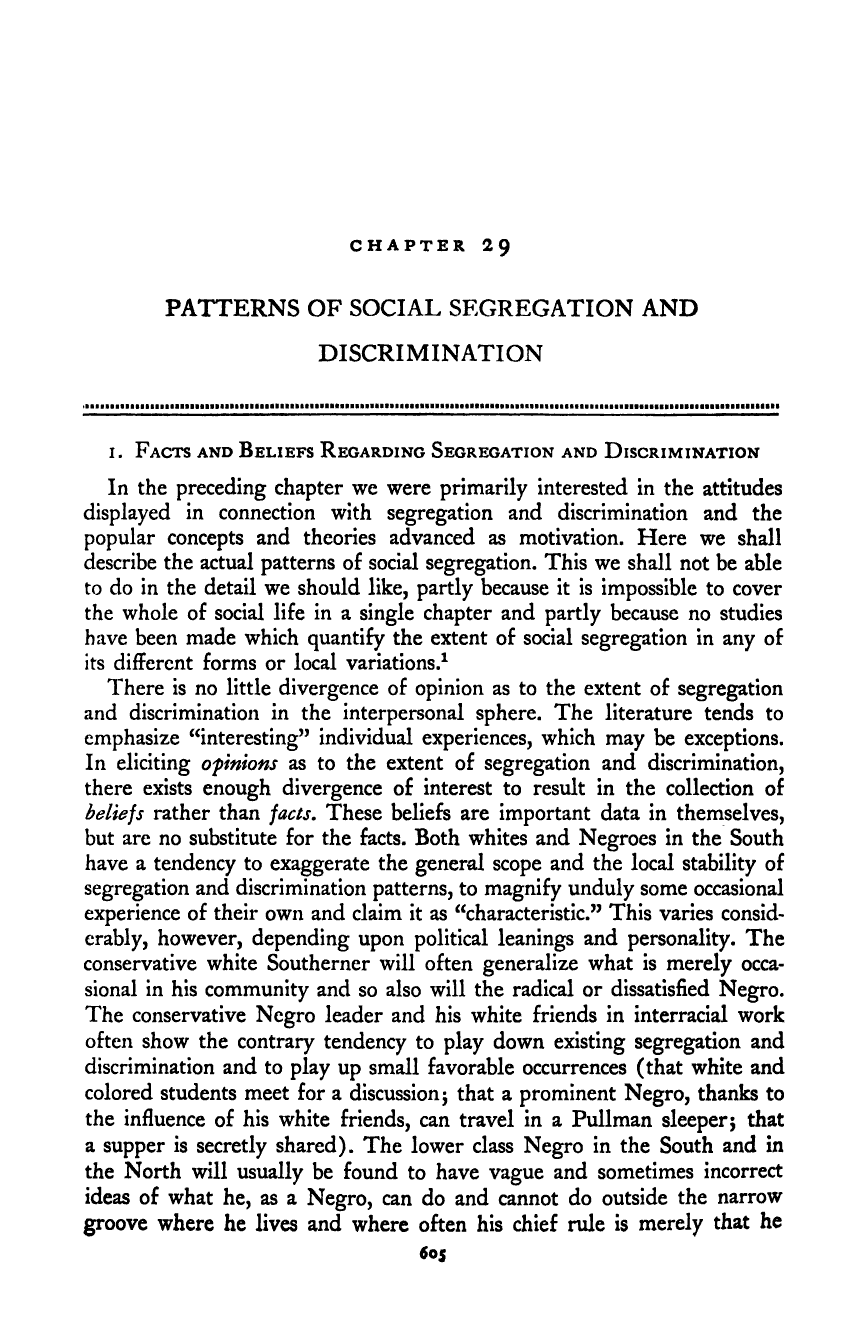Note: Gunnar Myrdal died in 1987, less than 70 years ago. Therefore, this work is protected by copyright, restricting your legal rights to reproduce it. However, you are welcome to view it on screen, as you do now. Read more about copyright.
Full resolution (TIFF) - On this page / på denna sida - VII. Social Inequality - 29. Patterns of Social Segregation and Discrimination - 1. Facts and Beliefs Regarding Segregation and Discrimination

<< prev. page << föreg. sida << >> nästa sida >> next page >>
Below is the raw OCR text
from the above scanned image.
Do you see an error? Proofread the page now!
Här nedan syns maskintolkade texten från faksimilbilden ovan.
Ser du något fel? Korrekturläs sidan nu!
This page has never been proofread. / Denna sida har aldrig korrekturlästs.
CHAPTER 29
PATTERNS OF SOCIAL SEGREGATION AND
DISCRIMINATION
I. Facts and Beliefs Regarding Segregation and Discrimination
In the preceding chapter we were primarily interested in the attitudes
displayed in connection with segregation and discrimination and the
popular concepts and theories advanced as motivation. Here we shall
describe the actual patterns of social segregation. This we shall not be able
to do in the detail we should like, partly because it is impossible to cover
the whole of social life in a single chapter and partly because no studies
have been made which quantify the extent of social segregation in any of
its different forms or local variations.^
There is no little divergence of opinion as to the extent of segregation
and discrimination in the interpersonal sphere. The literature tends to
emphasize ^interesting” individual experiences, which may be exceptions.
In eliciting ofinions as to the extent of segregation and discrimination,
there exists enough divergence of interest to result in the collection of
beliefs rather than facts. These beliefs are important data in themselves,
but are no substitute for the facts. Both whites and Negroes in the South
have a tendency to exaggerate the general scope and the local stability of
segregation and discrimination patterns, to magnify unduly some occasional
experience of their own and claim it as ^^characteristic.” This varies consid-
erably, however, depending upon political leanings and personality. The
conservative white Southerner will often generalize what is merely occa-
sional in his community and so also will the radical or dissatisfied Negro.
The conservative Negro leader and his white friends in interracial work
often show the contrary tendency to play down existing segregation and
discrimination and to play up small favorable occurrences (that white and
colored students meet for a discussion 5
that a prominent Negro, thanks to
the influence of his white friends, can travel in a Pullman sleeper; that
a supper is secretly shared). The lower class Negro in the South and in
the North will usually be found to have vague and sometimes incorrect
ideas of what he, as a Negro, can do and cannot do outside the narrow
groove where he lives and where often his chief rule is merely that he
605
<< prev. page << föreg. sida << >> nästa sida >> next page >>